Are you a Quiet Speculation member?
If not, now is a perfect time to join up! Our powerful tools, breaking-news analysis, and exclusive Discord channel will make sure you stay up to date and ahead of the curve.
Here we are, the final category of decks! Well, I say category but it is actually categories. You see, there are a number of archetypes that are either rare or derivative of the other ones and so don't really require separate articles. This is not to deride their value to Modern or their power. It is simply that there is far less to say about them than the other decks, so I'm combining them into a single article.

Prison
The first category is here because it is rare, not only in Modern but in Magic. It requires a very rare convergence of cards and metagame to work. Prison has appeared sporadically throughout Magic's history, posting strings of great results before disappearing completely for years. For most players, this is a good thing, as the archetype is deeply despised. Ask your typical player about Lantern Control, and you will get a response unpublishable on a family-friendly website. Wizards tends to agree, which is why they don't print many cards for the archetype.
What is Prison?
Prison is similar to unfair combo in that both are unfun to play against. Both seem to believe that fun in Magic is zero-sum, and therefore want to keep it all to themselves. However, where unfair combo tries to play all of the Magic on their own, Prison actively seeks to prevent their opponent from playing any Magic at all. They try to lock the opponent out of the game and then win at their leisure. This can be through persistent, recurring answers, or by playing cards that actively prevent the opponent from participating in the game. The goal of Prison is to make the opponent's deck irrelevant. Prison cards like Ensnaring Bridge shut down win conditions, and Chalice of the Void prevents spells being cast. If your deck is focused on the mechanics Prison attacks, you are in for a rough game. As a result many players despise the archetype.
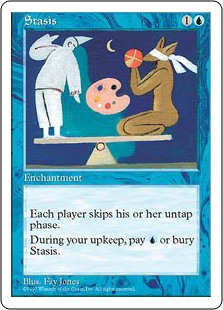 However, when Prison first appeared it was arguably the hero Magic needed. Prison appeared in 1996 directly before and during Black Summer, when the restriction of Black Vise allowed Necropotence decks to explode. Initially built around Winter Orb, the decks eventually began running Stasis and Kismet to lock down the Necro decks. They won by decking them with Howling Mine. It was a poor time for Magic all round.
However, when Prison first appeared it was arguably the hero Magic needed. Prison appeared in 1996 directly before and during Black Summer, when the restriction of Black Vise allowed Necropotence decks to explode. Initially built around Winter Orb, the decks eventually began running Stasis and Kismet to lock down the Necro decks. They won by decking them with Howling Mine. It was a poor time for Magic all round.
Prison is a recent addition to Modern, with Lantern Control only existing for about a year at this point. Prior to this there were various attempts at Prison, chiefly built around Enduring Ideal, but they've never been very successful. For this reason, when I need to be specific I'll be focusing on Lantern in this Guide. It functions similarly enough to Sun and Moon (also known as RW Prison) that my advice will apply there equally well.
Weaknesses and Strengths
I'm reversing the order because the strengths of the archetype are more easily understood in terms of the weaknesses. You see, Prison is a very targeted archetype, and if it doesn't successfully trap its opponent, the deck doesn't work. The reason that Stasis was so effective back in the day was because the Necro decks were very linear and could not destroy enchantments. Therefore they did not have any way to escape the lock. Decks like UW Control that could interact with the lock pieces had no difficulty breaking the lock and winning easily.
The strategy needs a relatively linear metagame to survive. I don't mean linear aggro, but rather where every deck is looking to do the same or similar things. All aggro decks that 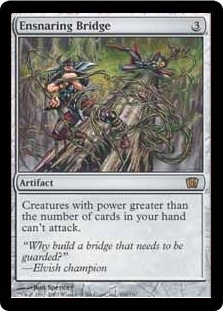 are pushed to be as uninteractive as possible, all midrange decks with greedy manabases, all fragile combo decks, etc. These are the metagames where Prison really thrives. Lock pieces are only effective against certain types of cards and certain strategies. It is difficult to fill your deck with sufficient effective pieces and still be able to win. Enduring Ideal decks have the tools to shut down any deck—the problem was that not every tool actually does enough against every deck for the whole to work. You have to target some aspect of the game that every deck you expect to face will utilize, and you have to have your lock stick. When decks either don't play into your lock, or can break it, you just lose.
are pushed to be as uninteractive as possible, all midrange decks with greedy manabases, all fragile combo decks, etc. These are the metagames where Prison really thrives. Lock pieces are only effective against certain types of cards and certain strategies. It is difficult to fill your deck with sufficient effective pieces and still be able to win. Enduring Ideal decks have the tools to shut down any deck—the problem was that not every tool actually does enough against every deck for the whole to work. You have to target some aspect of the game that every deck you expect to face will utilize, and you have to have your lock stick. When decks either don't play into your lock, or can break it, you just lose.
However, this is also the great strength of the archetype. It crushes decks that it targets. These decks play hard-to-interact-with permanent pieces of disruption which simply invalidate entire archetypes. The more distorted and predictable the metagame, the better Prison will be. Look to Eldrazi Winter, for example, when Lantern Control was one of the rare few archetypes capable of competing. When interactive control decks in particular are ascendant, Prison 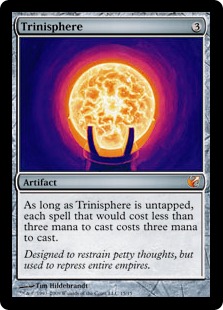 suffers. It has to gets its lock pieces into play and stick them, and true control has the tools to prevent that and the card drawing to find them. It is easy to trap an aggro deck, but harder to catch control.
suffers. It has to gets its lock pieces into play and stick them, and true control has the tools to prevent that and the card drawing to find them. It is easy to trap an aggro deck, but harder to catch control.
Consider the most successful Prison deck in Magic's history, Vintage Workshops. Vintage is almost exclusively blue decks that rely on artifact acceleration and card advantage. This predictability has allowed Shops to specialize its attack to the point that all the recent restrictions were aimed its direction. Should it hit Eldrazi decks, however, Shops unravels. Predictability and linearity are the keys to successful Prison decks. The more diverse the format, not just deck diversity but strategic diversity, the worse Prison becomes.
Being the Warden
The most important aspect of playing Prison is to recognize what cards are actually important in a given matchup. You have your lock, but that might not be what actually matters in a given game. In Lantern's case, the only card that really matters against aggro decks is Ensnaring Bridge. If they find that card, they will likely win. If not they definitely lose. Therefore the entirety of their gameplan needs to revolve around finding and resolving Bridge. Once the relevant lock is established, the remainder of the game is a matter of protecting that lock. Most of their deck becomes irrelevant, so the game becomes much more focused on whatever cards affect that lock. The theoretical power of a card is irrelevant. All that matters is maintaining the lock.
Jailbreak!
If you're playing against Prison, you need to assess your deck. Basically, the game revolves around Prison's lock, and just like they need to focus on establishing it, you need to focus on how, or if, you can escape. Some think that this is like playing a puzzle game, but in my experience the only puzzle is, "do the relevant lock pieces stick?" Therefore, if you are very linear and only have a few pieces of interaction for the lock in your 75, it is probably not worth your time to try. The likelihood of you 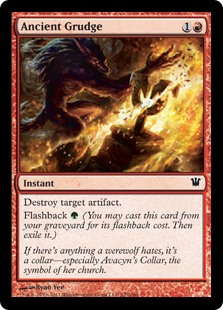 doing so is very low, so you're better off not diluting your deck. Just try to kill as quickly as possible so they never have the opportunity to lock you. You're unlikely to stop them otherwise.
doing so is very low, so you're better off not diluting your deck. Just try to kill as quickly as possible so they never have the opportunity to lock you. You're unlikely to stop them otherwise.
If you start out with a reasonable number of answers for the combo, then it does make sense to bring in additional answers. You have a higher likelihood of seeing relevant cards and resolving them after the lock is in place to begin with, so it is worthwhile to maximize your chances of doing so. This is why Grixis is a hard matchup for Lantern. They have a lot of different ways to escape from both the mill rocks and Ensnaring Bridge, meaning the lock never really closes. To win, you either race the trap, or you break the lock. It's hard and often frustrating to play against Prison, but it is not unbeatable. If you see a lot of Prison in your meta, the best response is to be less linear and more interactive. Prison likes linear decks, but fears control.
Toolbox
Though it no longer exists in Modern, I'd be remiss if I didn't at least mention Toolbox. This strategy is defined by repeatable tutoring engines and singleton answers for anything. The last true Modern Toolbox was Birthing Pod, which was banned once it became stifling. This is typical of Toolbox decks historically. Every time a good one emerges, it is simply better than any similar strategy. The repeatable engine generates 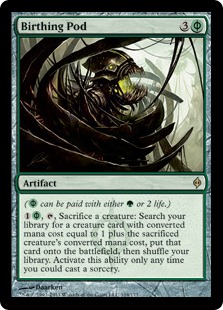 too much value for most decks to overcome and the ability to find the right answer at the right time lets them power through answers and hate. They nearly literally get to pick what card they draw, sometimes multiple a turn, and as a result when they're good they're too good.
too much value for most decks to overcome and the ability to find the right answer at the right time lets them power through answers and hate. They nearly literally get to pick what card they draw, sometimes multiple a turn, and as a result when they're good they're too good.
The only surviving relatives of Pod are Abzan Company and Kiki-Chord, and they're distant relatives at best. Abzan Company doesn't run very many silver-bullet answers, and its Chords and Companys tend to be used to find threats instead. As for Kiki Chord, while it's more likely to use its tutors to find answers, the tutoring isn't repeatable. You can always Eternal Witness back your Chord, but that isn't the same as Pod. For this reason, Chord decks are closer to Fair Combo than Toolbox.
Specialized Decks
Within each deck type there is a lot of variation and room for customization. The Modern cardpool is incredibly deep and players love to experiment, so it is natural for decks to evolve and diversify. Every so often, this results in a true break from an archetype. The new strategy may be still be very similar to the old archetype, but it is distinct. Tempo and Reanimator are specialized versions of Linear Aggro and Ramp, respectively. While they're recognizable members of their old archetypes, they've deviated enough from the baseline that I classify them separately, focusing how they differ from their parent archetypes.
Tempo
A Tempo deck is a Linear Aggro deck that is trying to get under an opponent and stay under them. To that end, they run a lot of interaction. The goal is to play a few fast but powerful threats and then protect them until the opponent dies. This may sound like a Gotcha! plan or even like a metagame adjustment for a typical linear deck, but the difference is in how it is used. Gotcha! decks directly protect their threats from opposing 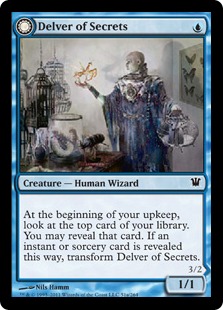 interaction, and there is nothing preventing a typical Linear Aggro deck from running more interaction. But Tempo decks are specifically built around interacting with their opponents.
interaction, and there is nothing preventing a typical Linear Aggro deck from running more interaction. But Tempo decks are specifically built around interacting with their opponents.
If you have ever seen Delver of Secrets in action, you have seen Tempo. You play an early threat or threats, and as your opponent tries to respond you make it as hard as possible. The high number of interactive cards you play is intended to keep your opponent from ever stabilizing. Traditional aggro decks accomplish the same feat by exhausting answers. Tempo instead answers answers. In short, where some aggressive decks utilize disruption, Tempo is built around disruption.
While Delver strategies are what most often comes to mind when you mention Tempo, Death and Taxes style strategies also qualify. Tempo plays cheap creatures and then disrupts the opponent until they die. This can be the mix of counterspells and discard from Delver, or DnT's mana denial. The key factor is that you establish an early clock and then disrupt your opponent.
Unique Strengths and Weaknesses
Tempo is designed to force the opponent onto the back foot and then keep them there. When they do this, they look like the best decks in the room. If they fail to do so, they're underpowered and disadvantaged. In fact the best way to fight these decks is to make them play from behind. Faster fair aggressive decks are very difficult for Tempo to overcome as a result.
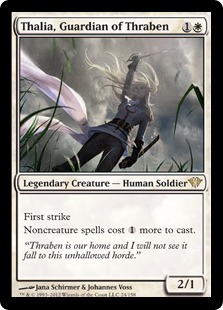 Compared to Linear Aggro, Tempo decks have better matchups against combo and other unfair decks, worse matchups against fair aggro decks, and the Fair deck matchup is indeterminate. The combination of pressure and disruption the strategy is built around can be shattering for decks looking to play less than fairly, but the fairer a deck is, the harder it is for Tempo to disrupt them. When they cannot do that, a key component of the strategy is lost and the deck suffers. Thus they struggle against aggro, and the more aggressive yet fair the deck is, the worse the matchup gets. Midrange and control matchups depend heavily on how each deck is built. Tempo can be built to be good against the Fair interactive decks or they may be vulnerable to it, but they can also be nightmarishly difficult. It is all dependent on how effectively they can disrupt the opponent and protect their clock.
Compared to Linear Aggro, Tempo decks have better matchups against combo and other unfair decks, worse matchups against fair aggro decks, and the Fair deck matchup is indeterminate. The combination of pressure and disruption the strategy is built around can be shattering for decks looking to play less than fairly, but the fairer a deck is, the harder it is for Tempo to disrupt them. When they cannot do that, a key component of the strategy is lost and the deck suffers. Thus they struggle against aggro, and the more aggressive yet fair the deck is, the worse the matchup gets. Midrange and control matchups depend heavily on how each deck is built. Tempo can be built to be good against the Fair interactive decks or they may be vulnerable to it, but they can also be nightmarishly difficult. It is all dependent on how effectively they can disrupt the opponent and protect their clock.
Reanimator
This is another archetype that doesn't currently exist in the metagame tierings, but it is hanging around the fringes and could become a force. Reanimator decks are ramp decks that operate on a different axis. Ramp threats are accelerated out from the hand or the library where Reanimator plays them from the graveyard. Same threats, same deck premise, but how they do it is very different. For this reason, Dredge is not Reanimator, nor is Goryo's Vengeance. Both bring back threats from their graveyards, but Dredge is exploiting recursive creatures and its namesake mechanic, while Vengeance only temporarily returns threats and actually plays like a combo deck. Reanimator wants to 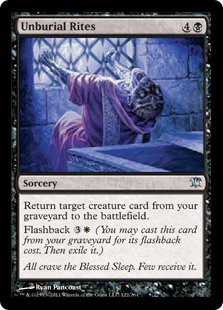 play large threats and have them stick around. Where Ramp is playing accelerants, Reanimator tries to dump cards into the graveyard and then play a reanimation spell to cheat the bomb into play.
play large threats and have them stick around. Where Ramp is playing accelerants, Reanimator tries to dump cards into the graveyard and then play a reanimation spell to cheat the bomb into play.
We don't see many true Reanimator decks these days. Early in Magic's history there were a lot of cheap reanimation spells, but as threats have gotten better Wizards has realized that such cards are dangerous. As such, the only really playable reanimation spell in Modern is Unburial Rites. The card is powerful and versatile, but has yet to really make an impact. However, there are a lot of Gifts Ungiven and Abzan Mulch decks at the periphery of the format that are actual Reanimator decks. With the right boost or metagame, they could become a real threat.
Unique Strengths and Weaknesses
Versatility is Reanimator's greatest strength. They can be faster to drop their threats and kill than other Ramp decks, but they're universally more versatile. Ramp's threats are limited by their mana costs, if they intend to actually pay for them, or by the tutor they're using (such as artifacts for Tinker). Reanimator never intends to pay for its creatures, only the reanimation spell, so it doesn't matter what the target costs. This allows it to have  a Toolbox-like suite of answers to any situation. Need to beat creature decks? Elesh Norn, Grand Cenobite. Combo? Iona, Shield of Emeria. Fight through answers? Inkwell Leviathan. Whatever the situation, you can reanimate the right fatty for the job.
a Toolbox-like suite of answers to any situation. Need to beat creature decks? Elesh Norn, Grand Cenobite. Combo? Iona, Shield of Emeria. Fight through answers? Inkwell Leviathan. Whatever the situation, you can reanimate the right fatty for the job.
The problem is that utilizing the graveyard in a reasonably fair way is a huge risk in Modern. Because of Dredge, Grixis, and other decks that use their graveyards as resources there is a lot of incidental hate for Reanimator. The decks are built around dumping fatties into their graveyard and if you have answers for that the deck really doesn't work anymore. Compared to Ramp, they are faster and more versatile at the expense of being more vulnerable to hate.
Your Guide to Life, the Metagame, and Everything
And with that, we have the Beginner's Guide to the deck archetypes of Modern. This is by no means an exhaustive explanation of each, but it should be enough to provide new players with the foundation they need to get into the format. Everything else just requires experience.





Hey Kiki chord is still around for toolbox.
Also sultai traverse is becoming a thing. Although I prefer my sultai midrange build.
What I mean is that chord especially post board is very toolbox. While in many matchups they’re tryin. To assemble the combo asap, they become heavily toolbox is it’s any of the matchups where combo is not the answer
Agreed, Aaron. I have no idea how this guy came the conclusion Kiki-Chord isn’t a toolbox and that toolbox decks “no longer exist in Modern”. Then what have I been playing for the last 3 years in Modern?
In this series of articles, David is trying to come up with very specific terms to encompass every possible type of deck. In some cases he’s used the terms very differently from how the community has traditionally used them. I too would classify Kiki Chord as Toolbox (and probably Abzan CoCo too), but he appears to be using it differently here. His criteria is that the tutoring engine/suite be repeatable—I could easily see expanding that to include regular tutoring. I’ll let him weigh in here on the criticism.
You have been playing Kiki-Chord, the closest thing Modern has to a Toolbox strategy anymore. It relies on tutors and bullets which make it look like a Toolbox deck, but it is not a true inheritor of the archetype. The defining aspect of the Toolbox strategy was that it was built around a repeatable engine, such as Survival of the Fittest and Birthing Pod. Many decks can play tutors, and in fact it is correct to do so if it supports your strategy, but that alone does not make a Toolbox deck. You have to be able to do it every turn. For this reason, Kiki-Chord is a Fair Combo deck with a Toolbox package.
At what point does something no longer qualify? Kiki-Chord can easily chain tutoring from the Kiki-Witness-Chord Chain every turn?
K, you just described Pod in that last sentence.
“Linear Aggro deck that is trying to get under an opponent and stay under them. To that end, they run a lot of interaction.”
>Linear Aggro
>Interaction
Linear and interactive are antonyms. Tempo decks (Merfolk, Delver, etc.) are interactive aggro decks. Bogles, Bushwhacker Zoo, Infect are examples of linear aggro decks.
Do you disagree with this assessment or was labeling tempo decks “linear” a mistake?
No, they’re not linear aggro decks, but they are directly descended from them. A tempo deck is an aggro deck built around interaction where aggro decks may run some but it isn’t an integral part of the strategy. Sorry if this was no clear enough